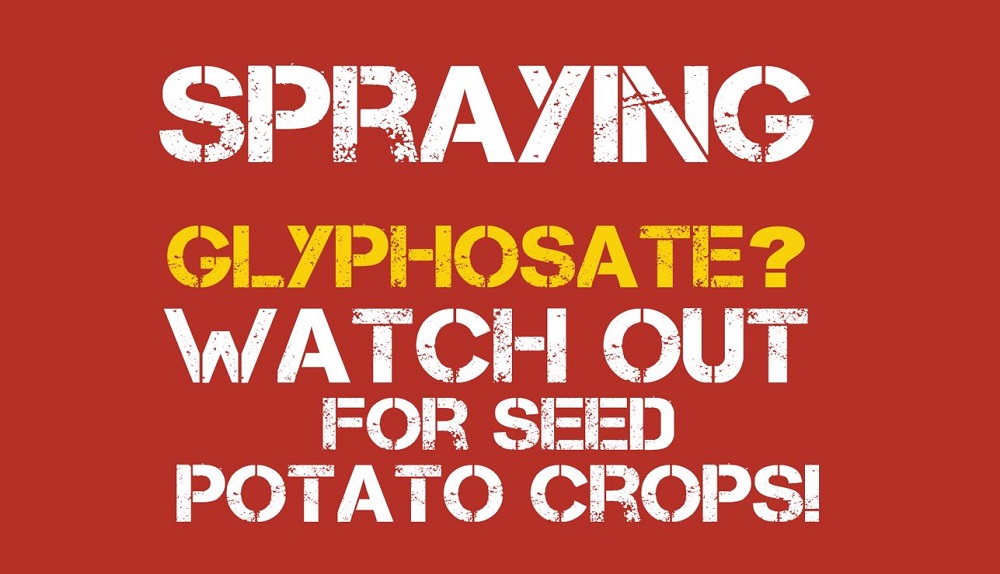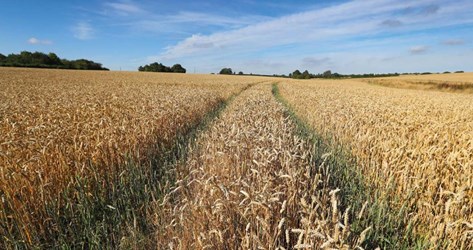- Home
- Knowledge library
- Pre-harvest glyphosate use in cereals and oilseed rape
Pre-harvest glyphosate use in cereals and oilseed rape
Glyphosate products may be used pre-harvest on a range of crops to control weeds, aid harvesting and help protect grain quality (particularly in wet harvests) and food safety. This publication outlines stewardship measures to maximise product efficacy and minimise crop residues.
Appropriate use of glyphosate pre-harvest* can aid harvest and protect grain quality in a range of cereal, oilseed and pulse crops. This stewardship guidance outlines the measures required to minimise preventable residues (in water and produce) and the risk of resistance occurring in UK weed populations.
Why use glyphosate pre-harvest?
Weed control
Glyphosate applications can be used as part of a long-term integrated management plan to reduce weed burdens and also to ease harvest of weed-infested crops. Perennial weeds – such as couch and volunteer potatoes – are particularly susceptible at this spray timing. Late growth of annual weeds can also be controlled at this stage.
Harvest aid
Glyphosate applications (which kill the crop) can help even-up and speed up crop ripening to facilitate combining.
*Glyphosate is no longer permitted for preharvest/desiccant use in the EU (pre-harvest use for weed control is still permitted).
The EU decision (effective from 16 December 2023) applies to Northern Ireland authorisations.
The use of glyphosate as a pre-harvest desiccant is still permitted in Great Britain (England, Scotland and Wales), providing the product label lists desiccant as an authorised use.
Action points for pre-harvest glyphosate use
- Be sure your target market permits the use of glyphosate
- Check and follow product labels
- Follow best application practice (for maximum efficacy and drift reduction)
- Only apply glyphosate as a harvest aid when the grain or seeds have less than 30% moisture content
- Follow guidance to estimate moisture contents
- Only target weeds that are green, healthy and actively growing
- Be aware that although a single pre-harvest application of glyphosate per crop should not increase weed resistance risks, this is not necessarily the case where survivors are present from prior glyphosate applications
Pre-harvest glyphosate: best practice in cereals
For cereals, glyphosate applications can reduce green material, including immature tillers, and improve harvest efficiency and grain storage. This can be particularly valuable in wet seasons. Glyphosate residues are occasionally found in samples. Although these residues have been well below Maximum Residue Levels (MRLs), they require careful management.
Pre-harvest glyphosate: best practice in cereals
Pre-harvest glyphosate: best practice in oilseed rape
The indeterminate growth of oilseed rape can make the crop a challenge to harvest. Such growth results in uneven ripening between the early- and late-formed branches. As a result, pre-harvest glyphosate applications are more common in oilseed rape crops, compared to cereals.
Pre-harvest glyphosate: best practice in oilseed rape
Further information
- This information is based on a publication that was prepared with the support of UK glyphosate industry companies: Albaugh, Barclay, FMC, Monsanto, Nufarm and Syngenta
- This information is for generic guidance only
- Glyphosate product labels can vary in the range of crops and weed species covered and the dose and timings recommended
- Always check the product label information before use and follow the specific product instructions
- Always consider your local conditions and consult a BASIS-qualified adviser, if necessary
- Ensure any use is acceptable for the market you are selling into and keep full records, as necessary
Managing glyphosate resistance
Monitoring of contaminants in UK cereals used for processing food and animal feed (2016–21)
Glyphosate and non-target vegetation

As nearby vegetation is potentially sensitive to glyphosate, take care to minimise spray drift – follow best practice, and check weather conditions. One of the most sensitive crops is seed potatoes.


